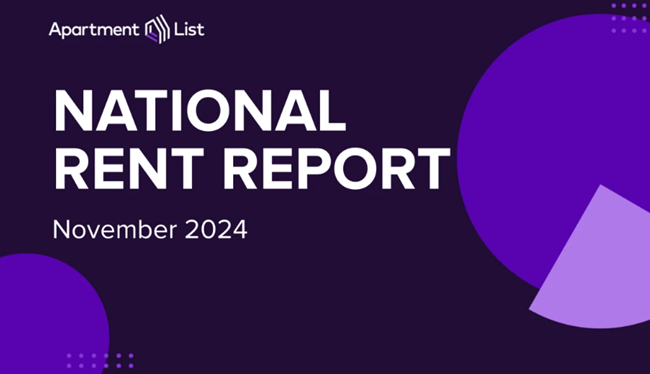The national median rent dipped 0.7% in October as rental housing enters the slow season and the vacancy rate rises, according to the November report in Apartment List.
The median monthly rent nationally fell by $10, putting it at $1,394, and “we’re likely to see that number continue to dip modestly through the remainder of the year,” Apartment List economists write in the report.
October saw 89 of the nation’s 100 largest cities rents fall, in line with the broader national trend. Many of the steepest year-over-year declines remain concentrated in Sun Belt metros that are rapidly expanding their multifamily inventory, such as Austin (-7.1 percent year-over-year), Raleigh (-4.6 percent), and Jacksonville (-4.1 percent).
Rental patterns have been changing the last few years. Since 2022 seasonal declines in rent prices that take place during the fall and winter have been steeper than usual and seasonal increases of the spring and summer have been milder, the report says.
Year-over-year rent growth nationally is -0.7 percent and has now been in negative territory for nearly a year and a half. Despite this, the national median rent is still more than $200 per month higher than it was just a few years ago.
Increasing vacancy rate
On the supply side of the rental market, “our national vacancy index ticked up to 6.8 percent, the highest reading since the onset of the pandemic,” the economists write.
This rise in the vacancy rate is coming on the heels of the strongest quarter for new apartment completions in five decades.
Conclusion
“Rent increases are currently being moderated by a robust construction pipeline that has already delivered a decades-high number of new apartment units in 2024, with considerable runway still to go in the boom.
“And while rental demand has bounced back a bit this year, recent signs of labor market softness could dampen demand going forward. With this in mind, we expect that new supply will continue to outstrip demand into 2025,” Apartment List economists write.







